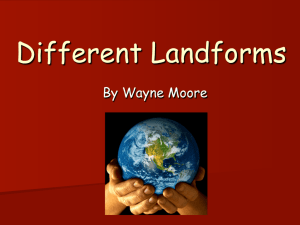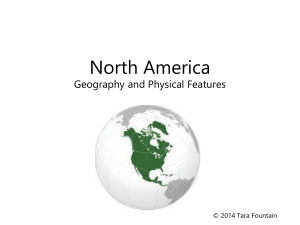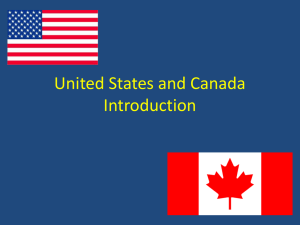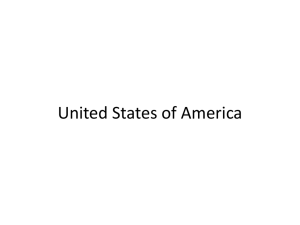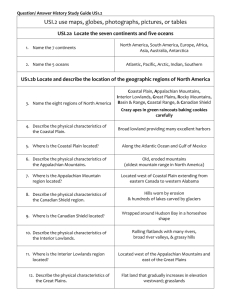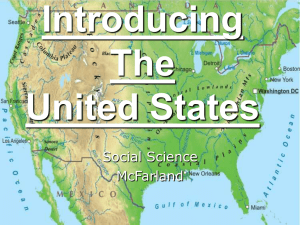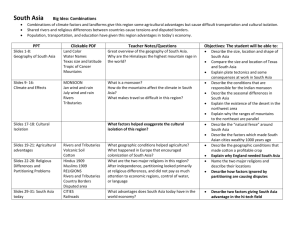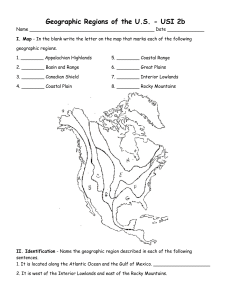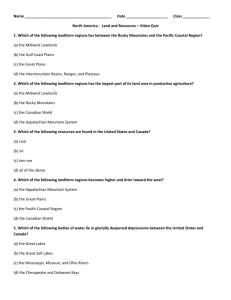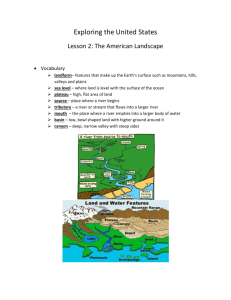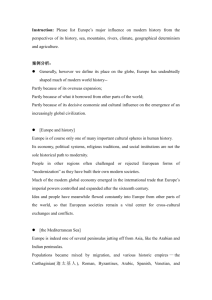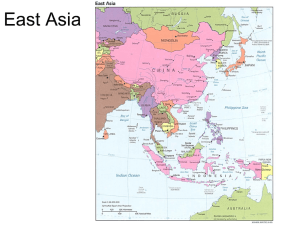Social Studies Chapter 1
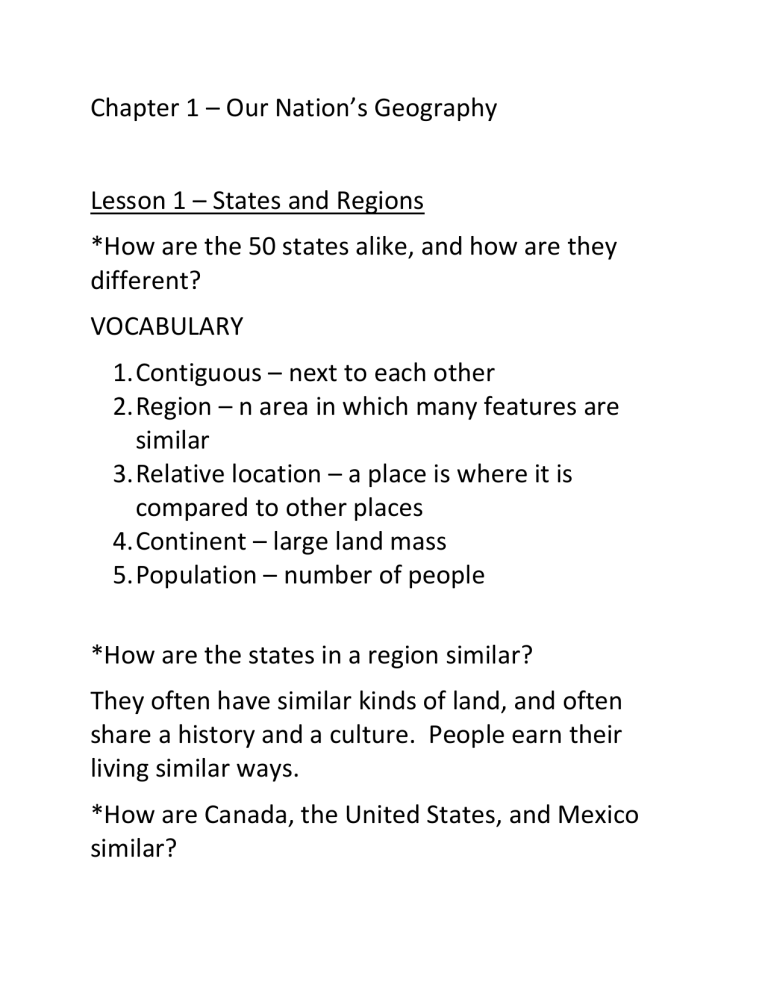
Chapter 1 – Our Nation’s Geography
Lesson 1 – States and Regions
*How are the 50 states alike, and how are they different?
VOCABULARY
1.
Contiguous – next to each other
2.
Region – n area in which many features are similar
3.
Relative location – a place is where it is compared to other places
4.
Continent – large land mass
5.
Population – number of people
*How are the states in a region similar?
They often have similar kinds of land, and often share a history and a culture. People earn their living similar ways.
*How are Canada, the United States, and Mexico similar?
All three countries were explored and settled by
European nations.
Lesson 2 – The Land
*How does the nation’s geography differ as you travel across the 50 states?
VOCABULARY
Landform region – a region that has similar landforms throughout
Climate – the kind of weather a place has over a long time
Mountain range – a group of connected mountains
Erosion – the gradual wearing away of Earth’s surface
Prairie – an area of flat or rolling land covered mostly by grasses
Environment – surroundings in which people, plants, and animals live
*What makes landform regions in the United States different? p. 23
The shape of the landforms and the way they came to be.
*What is the difference between the Coastal Plain in
Massachusetts and in Florida? p.24
The Coastal Plain is wider in Florida.
*How are the Appalachian Mountains different from the
Coastal Plain? p.25
The Appalachians are made up of mountains, ridges, and valley instead of being flat.
*How is the environment of the Central Plains different from that of the Great Plains? p. 26
The Great Plains are flatter and there are few rivers and trees.
*How do the Rocky Mountains differ from the
Intermountain Region? p.27
The Intermountain Region contains low and dry land.
The Rocky Mountains are high and have snow and rain.
*How is the Pacific Coast different from the Atlantic
Coast? p.29
The Pacific Coast is rocky and has little flat land.
Lesson 3 – Bodies of Water
*What are some of the different bodies of water in the
United States?
VOCABULARY
Inlet – any area of water extending into the land from a larger body of water
Gulf – the largest inlets
Sound – a long inlet that separates offshore islands from the mainland
Tributary – a stream or river that flows into a larger stream or river
River system – a river and its tributaries
Drainage basin – the land drained by a river system
Fall line – a place where the land drops sharply, causing rivers to form waterfalls or rapids
*How do the Great Lakes and the Great Salt Lake differ? p.31
The Great Lakes contain freshwater. The Great Salt Lake contains salt water.
*What is the difference between a river and a river system? p.32
A river system is made up of a river as well as its tributaries.
*Why were some early cities built near rivers? p. 33
It was easier to travel and to transport goods.
*How do rivers east and west of the Continental Divide differ? p.34
Eastern rivers flow into the Atlantic Ocean or Gulf of
Mexico. Western rivers flow into the Pacific or Arctic
Oceans.
